Rosacea isn’t just a bad blush. It’s a persistent, often misunderstood skin condition that turns everyday moments-drinking coffee, walking outside, or even laughing-into sources of embarrassment. For millions, the face becomes a map of redness, bumps, and burning sensations that won’t go away, no matter how much they scrub or hide it. Unlike temporary flushing, rosacea-related redness lingers. It doesn’t fade after a stressful meeting or a spicy meal. It builds. And if left unchecked, it can lead to visible blood vessels, thickened skin, or even eye irritation.
What Causes the Redness to Stick Around?
The face flushes when tiny blood vessels near the surface expand. In healthy skin, this happens briefly after heat, exercise, or emotion. In rosacea, those vessels stay dilated. The exact reason? No single cause. It’s a mix of genetics, immune system overreactions, and environmental triggers. Studies show that 75% of people with rosacea first notice flushing before any bumps appear. That early redness is the warning sign. Common triggers are more than just myths. Hot drinks above 60°C (140°F), red wine, spicy food with capsaicin, UV exposure above index 3, and even sudden temperature shifts can set off a flare. For many, the flushing lasts 5 to 10 minutes-but in severe cases, it can stretch for hours. And it’s not just about looks. About two-thirds of patients feel a burning or stinging sensation during these episodes. That’s not just discomfort-it’s a signal that the skin’s barrier is under attack.Topical Antibiotics: The First-Line Defense
When flushing turns into persistent redness and then into acne-like bumps and pustules, that’s papulopustular rosacea-the most common subtype. And for this, topical antibiotics are the go-to treatment. They don’t fight infection like they do for a sore throat. Instead, they calm inflammation and reduce the population of Demodex mites, tiny organisms that live on everyone’s skin but multiply in rosacea-prone areas. Three main topical options are backed by solid data:- Metronidazole 0.75% gel (Rozex®): The oldest option, approved in 1985. It reduces bumps and redness by 60-70% after 6-9 weeks of twice-daily use. It’s gentle, making it ideal for sensitive skin.
- Ivermectin 1% cream (Soolantra®): A newer player, approved in 2014. In a major 2019 study, it cleared 76% of inflammatory lesions after 12 weeks-better than metronidazole. It also targets Demodex mites directly.
- Azelaic acid 15% gel (Finacea®): Not an antibiotic, but works similarly by reducing inflammation. It’s effective (68-73% improvement) and often used when irritation from antibiotics is a concern.
How Long Until You See Results?
Patience isn’t optional-it’s required. These treatments don’t work overnight. Most people won’t notice a difference until after 4 to 6 weeks. Full results take 12 to 16 weeks. That’s why so many quit too early. A 2023 study found only 40-50% of patients stick with topical treatments past three months. The reason? They expect quick fixes, but rosacea is a marathon, not a sprint. Some even feel worse before they get better. In the first two weeks, stinging, dryness, or extra redness is common. That’s not a sign the treatment is failing-it’s often the skin adjusting. Dermatologists recommend starting with a small patch test on the jawline for three days before applying it to the whole face.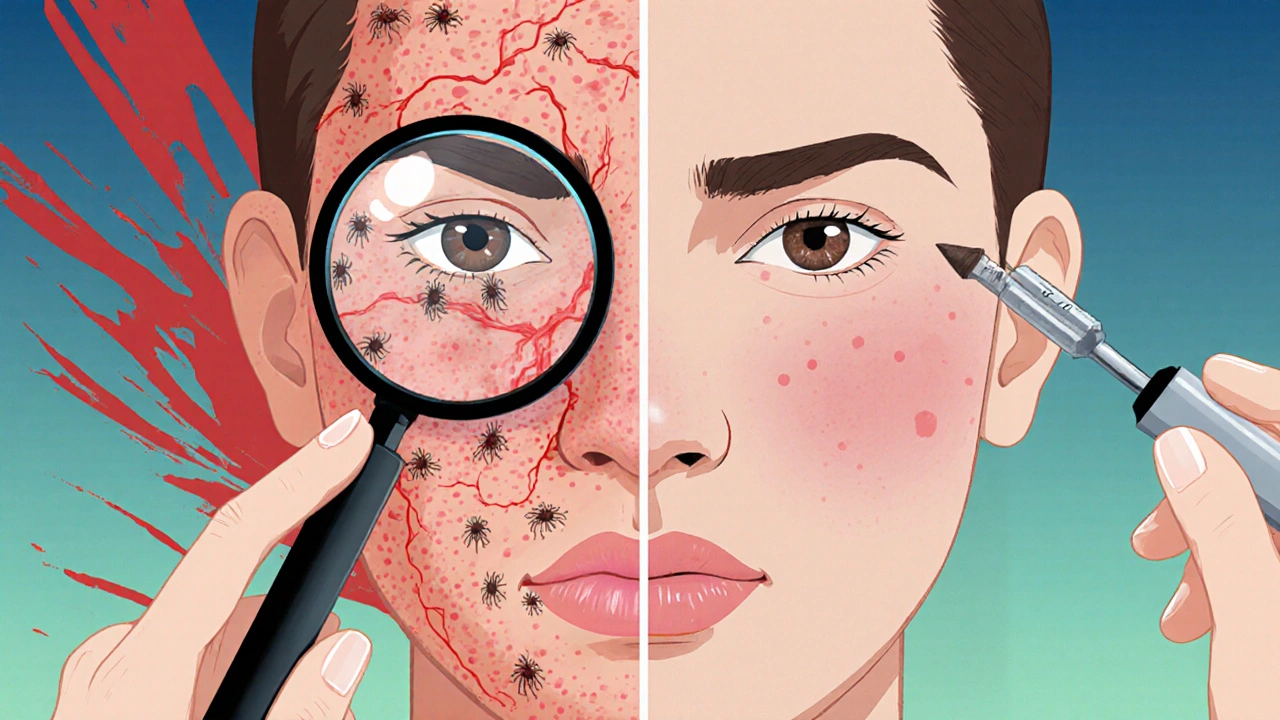
Real Results, Real Stories
On patient forums, the feedback is split but leans positive. One Reddit user wrote: “After 8 weeks of Soolantra, my facial bumps dropped by 80%. No more hiding behind makeup.” Another shared: “Metronidazole made my skin flaky and raw at first. I almost quit. Then, around week 5, the redness started to calm.” A survey of 2,100 rosacea patients found 68% saw improvement with topical treatments. But 45% stopped within six months. Why? Cost (up to $350 a year without insurance), slow progress, and irritation. The key to sticking with it? Manage expectations. Set a calendar reminder. Track progress with weekly photos. Don’t judge day 3-judge day 60.What They Don’t Tell You About Application
It’s not just which cream you use-it’s how you use it. Most people apply too much. A pea-sized amount is enough for the entire face. Too much doesn’t speed things up-it just increases irritation. Apply to completely dry skin, at least 15 minutes after washing. Don’t layer it over serums or moisturizers right away. Wait 20 minutes before adding anything else. Use fragrance-free, non-comedogenic cleansers. And never skip sunscreen. Mineral sunscreens with zinc oxide (10-20%) are best-they don’t sting and block UV rays that trigger flares.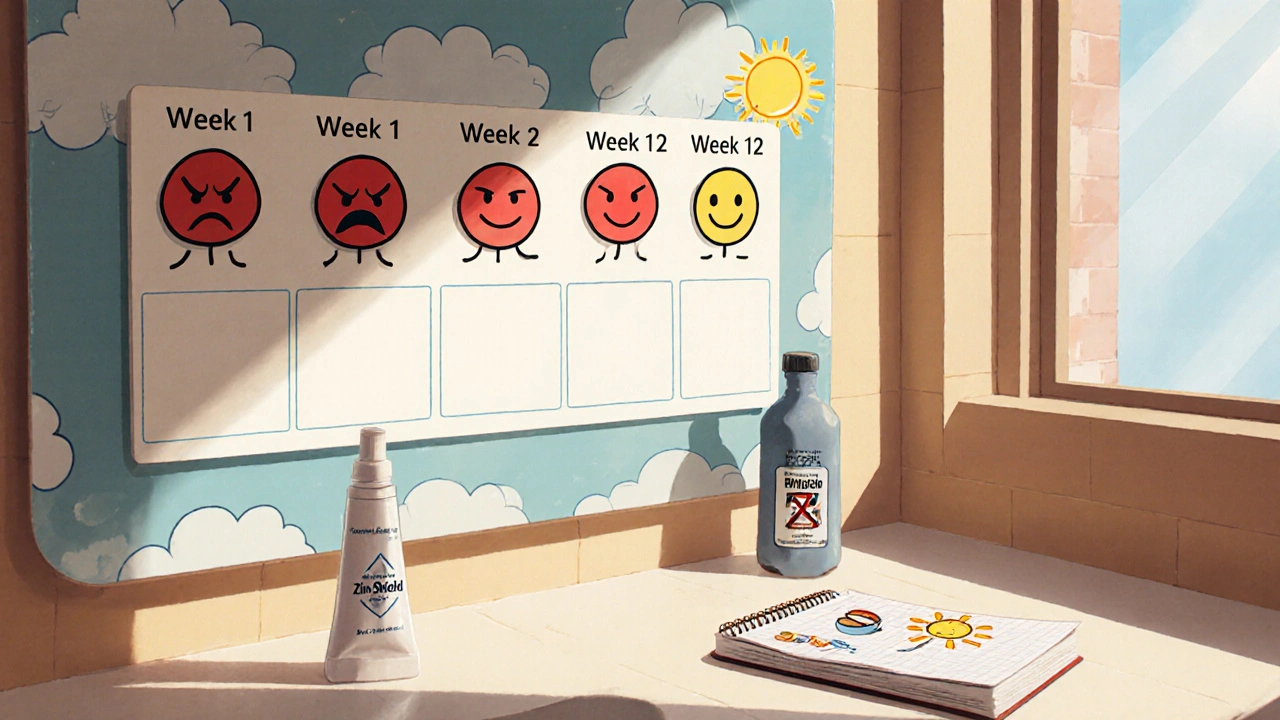
Antibiotics Don’t Fix Everything
Here’s the hard truth: topical antibiotics treat bumps and pustules. They do little to reduce the underlying redness or flushing. That’s where other tools come in:- Brimonidine 0.33% gel (Mirvaso®): Temporarily constricts blood vessels to reduce redness for up to 12 hours.
- Oxymetazoline 1% cream (Rhofade®): Same effect, longer-lasting.
When Treatment Fails
If you’ve used a topical antibiotic consistently for 8 weeks and see less than 25% improvement, it’s time to reassess. Possible reasons:- You’re still exposed to triggers (e.g., daily hot coffee, no sunscreen)
- Your skincare routine is too harsh (exfoliants, alcohol-based toners)
- You have ocular rosacea (dry, gritty, red eyes) that needs separate treatment
- Your subtype is more complex-like phymatous rosacea with thickened skin
What’s Next for Rosacea Treatment?
The market for rosacea treatments is growing fast-projected to hit $2.74 billion by 2030. New formulations are on the horizon. Galderma is testing a combination cream with ivermectin and hydrocortisone. Early results show 85% lesion reduction at 12 weeks-better than ivermectin alone. But the biggest breakthrough isn’t a new drug. It’s better education. Patients who understand their triggers, use gentle routines, and stay consistent with treatment report the best outcomes. Rosacea isn’t curable-but it’s absolutely manageable. The goal isn’t perfect skin. It’s fewer flares, less burning, and more confidence.Can topical antibiotics cure rosacea?
No, topical antibiotics don’t cure rosacea. They reduce inflammatory bumps and pustules by calming skin inflammation and targeting Demodex mites. But they don’t fix the underlying vascular issues that cause flushing or persistent redness. Rosacea is a chronic condition that requires long-term management, not a short-term fix.
How long does it take for topical antibiotics to work?
Most people start noticing improvement after 4 to 6 weeks, but full results take 12 to 16 weeks of consistent use. Patience is critical-stopping too early is the most common reason treatment fails. Don’t judge progress by day 5 or even day 15. Track changes over months, not weeks.
Is ivermectin better than metronidazole?
Yes, in terms of effectiveness. A 2019 study showed ivermectin reduced inflammatory lesions by 76% at 12 weeks, compared to 55% with metronidazole. Ivermectin also targets Demodex mites directly. However, metronidazole is gentler and preferred for sensitive skin. Both are effective-choose based on your skin’s tolerance and your doctor’s recommendation.
Why does my skin sting when I use the cream?
Initial stinging, dryness, or redness is common in the first 1-2 weeks. This is often due to skin barrier disruption from rosacea itself, not necessarily the medication. To reduce irritation, apply the cream to slightly damp skin, use a pea-sized amount, and wait 15-20 minutes after washing. Adding a ceramide-based moisturizer can also help repair the barrier.
Can I use makeup with topical antibiotics?
Yes, but choose carefully. Use mineral-based, fragrance-free, non-comedogenic makeup. Apply your topical treatment first, wait 15-20 minutes, then apply makeup. Avoid heavy foundations or products with alcohol, witch hazel, or menthol-they can worsen irritation. Look for labels that say "for sensitive skin" or "dermatologist-tested."
Do I need to use sunscreen every day?
Absolutely. UV exposure is one of the top triggers for rosacea flares. Use a mineral sunscreen with zinc oxide (10-20%) every morning, even on cloudy days. Avoid chemical sunscreens-they can sting sensitive skin. Reapply every two hours if you’re outside. Sun protection isn’t optional-it’s part of your treatment plan.

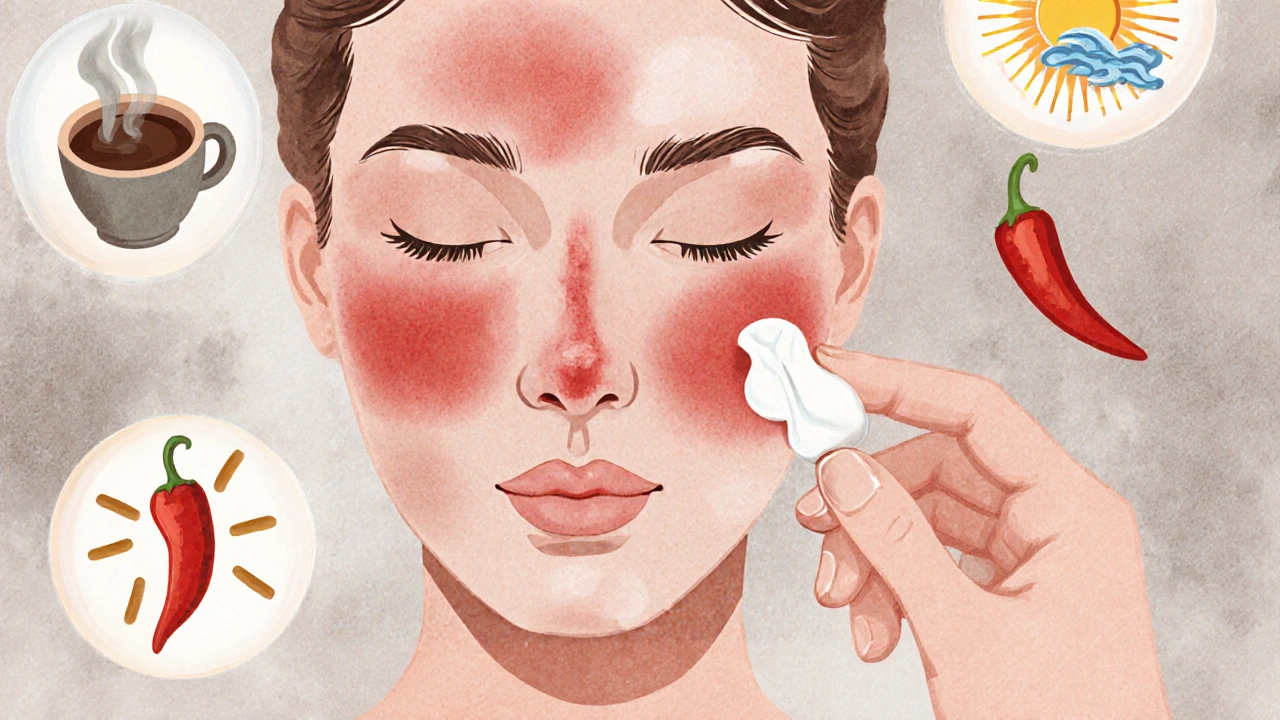
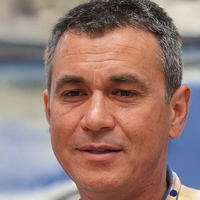
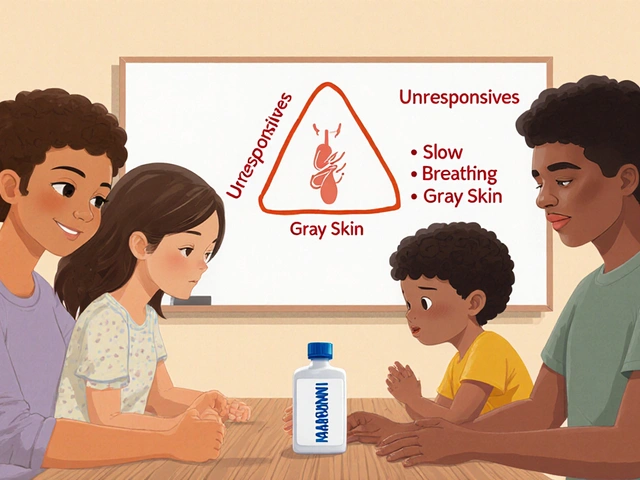
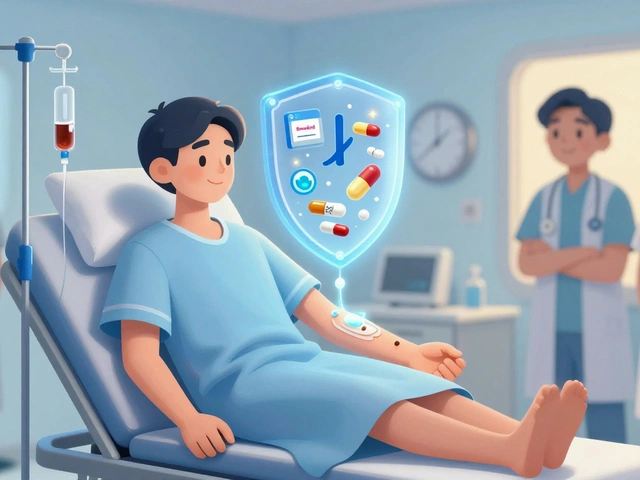
November 26, 2025 AT 16:07 PM
Bro, I tried metronidazole for 3 weeks and quit because my face looked like a boiled lobster. Then I switched to ivermectin-same week, my bumps started vanishing. No joke, week 5 I stopped wearing foundation. Don’t waste time on stuff that doesn’t work for your skin type.
November 27, 2025 AT 01:24 AM
One must contemplate the ontological implications of dermatological intervention in the context of chronic inflammatory conditions. The very notion of 'cure' is a modernist fallacy; rosacea, as a manifestation of systemic dysregulation, cannot be reduced to topical applications. One is reminded of the ancient humoral theory-perhaps the true remedy lies not in gels, but in the alignment of one’s inner constitution with the cosmos.
November 27, 2025 AT 07:11 AM
Ugh, another post pretending this is a 'medical issue' and not just people being too lazy to stop drinking red wine and using retinol at 2 a.m. I’ve had rosacea since I was 19. I don’t use creams. I avoid triggers. That’s it. No magic potions. Stop selling hope.
November 27, 2025 AT 14:17 PM
It’s interesting how we treat skin like it’s a problem to be solved, rather than a mirror of our lifestyle. The redness isn’t the enemy-it’s the messenger. Maybe instead of fighting the flush, we should ask why our bodies are screaming for calm. What are we rushing toward that makes our blood vessels explode?
November 28, 2025 AT 14:24 PM
From India, I can say: no one here talks about rosacea like this. We just say 'face burning' and use aloe vera. But honestly, I tried metronidazole after reading this-slow start, but my skin stopped feeling like fire. Now I use sunscreen like my life depends on it. And yes, I drink tea at 50°C, not 70°C. Small changes, big difference.
November 30, 2025 AT 01:13 AM
Just a quick note: if you’re using azelaic acid and your skin feels tight, try layering a ceramide cream 10 minutes after. It doesn’t interfere with the treatment-it helps your barrier recover. Also, don’t wash your face with hot water. Lukewarm only. I learned this the hard way after 6 months of irritation.
December 1, 2025 AT 23:29 PM
Wait-wait-wait-let me just say this again-because people need to hear it-sunscreen-is-non-negotiable-every-single-day-even-if-it’s-cloudy-even-if-you’re-inside-near-a-window-yes-even-if-you-think-you’re-fine-because-UV-A-rays-penetrate-glass-so-stop-making-excuses-your-skin-will-thank-you-in-six-months-
December 2, 2025 AT 04:24 AM
Guys, I went from looking like a tomato that got hit by a truck to actually being able to go out without feeling like everyone’s staring. Ivermectin was my miracle-but only after I stopped using that 'gentle' face wash that had 'tea tree oil' in it. Tea tree is poison for rosacea. I swear. I cried the first week. Then I cried the second week. Then I cried because I saw my reflection and didn’t want to look away. It’s not easy. But it’s worth it.
December 3, 2025 AT 07:39 AM
i tried the ivermectin cream for 2 weeks and my skin got so dry i thought i was turning into a lizard. then i read somewhere that you shouldnt use it with niacinamide so i stopped the niacinamide and it got better. not sure if its the cream or just not mixing stuff. also i still drink coffee. sorry not sorry
December 5, 2025 AT 05:18 AM
I appreciate how detailed this is. Rosacea doesn’t get enough thoughtful attention. Most people think it’s just acne or allergies. But the emotional toll? That’s the real battle. I’ve been managing this for 12 years. I don’t expect perfect skin. I just want to wake up and not dread my reflection. Small wins matter. Keep going.
December 6, 2025 AT 04:11 AM
Of course you’re still flushing-you’re probably still eating spicy food, drinking alcohol, and using 'natural' skincare full of essential oils. You think your 'sensitive skin' is special? It’s not. It’s just you refusing to change your habits. If you want clear skin, stop being a baby. Stop blaming the cream. Look in the mirror and ask yourself: what am I doing to my body?
December 6, 2025 AT 04:22 AM
Let’s be real-topical antibiotics are just Band-Aids for a systemic failure of modern life. We’re all drowning in toxins, stress, and processed food. Ivermectin? Cute. But have you tried fasting? Or cold plunges? Or, dare I say, meditation? The real cure is not in a tube-it’s in your soul. Also, I use ivermectin with a gold-plated applicator. It’s more effective. Just saying. 🌟💎
December 6, 2025 AT 09:55 AM
For the person who said they quit metronidazole because their skin got flaky-don’t give up. That’s the skin rebuilding. I used to hate the sting. Now I call it ‘the burn of healing.’ You’re not failing-you’re evolving. And yes, it takes months. But when you finally look in the mirror and don’t flinch? That’s the moment you realize: you didn’t just treat your skin. You reclaimed your confidence.